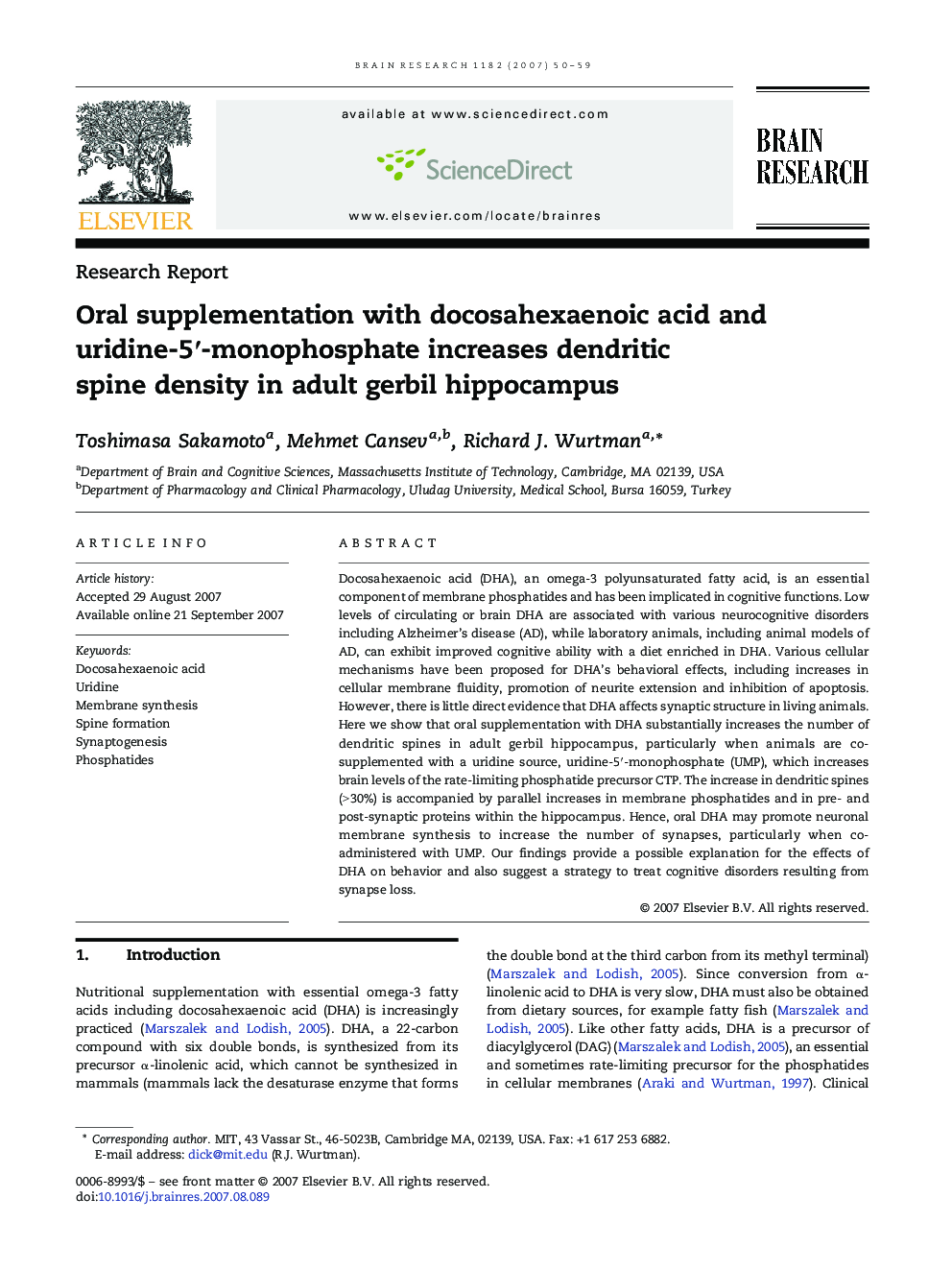| Article ID | Journal | Published Year | Pages | File Type |
|---|---|---|---|---|
| 4330465 | Brain Research | 2007 | 10 Pages |
Docosahexaenoic acid (DHA), an omega-3 polyunsaturated fatty acid, is an essential component of membrane phosphatides and has been implicated in cognitive functions. Low levels of circulating or brain DHA are associated with various neurocognitive disorders including Alzheimer's disease (AD), while laboratory animals, including animal models of AD, can exhibit improved cognitive ability with a diet enriched in DHA. Various cellular mechanisms have been proposed for DHA's behavioral effects, including increases in cellular membrane fluidity, promotion of neurite extension and inhibition of apoptosis. However, there is little direct evidence that DHA affects synaptic structure in living animals. Here we show that oral supplementation with DHA substantially increases the number of dendritic spines in adult gerbil hippocampus, particularly when animals are co-supplemented with a uridine source, uridine-5′-monophosphate (UMP), which increases brain levels of the rate-limiting phosphatide precursor CTP. The increase in dendritic spines (> 30%) is accompanied by parallel increases in membrane phosphatides and in pre- and post-synaptic proteins within the hippocampus. Hence, oral DHA may promote neuronal membrane synthesis to increase the number of synapses, particularly when co-administered with UMP. Our findings provide a possible explanation for the effects of DHA on behavior and also suggest a strategy to treat cognitive disorders resulting from synapse loss.
